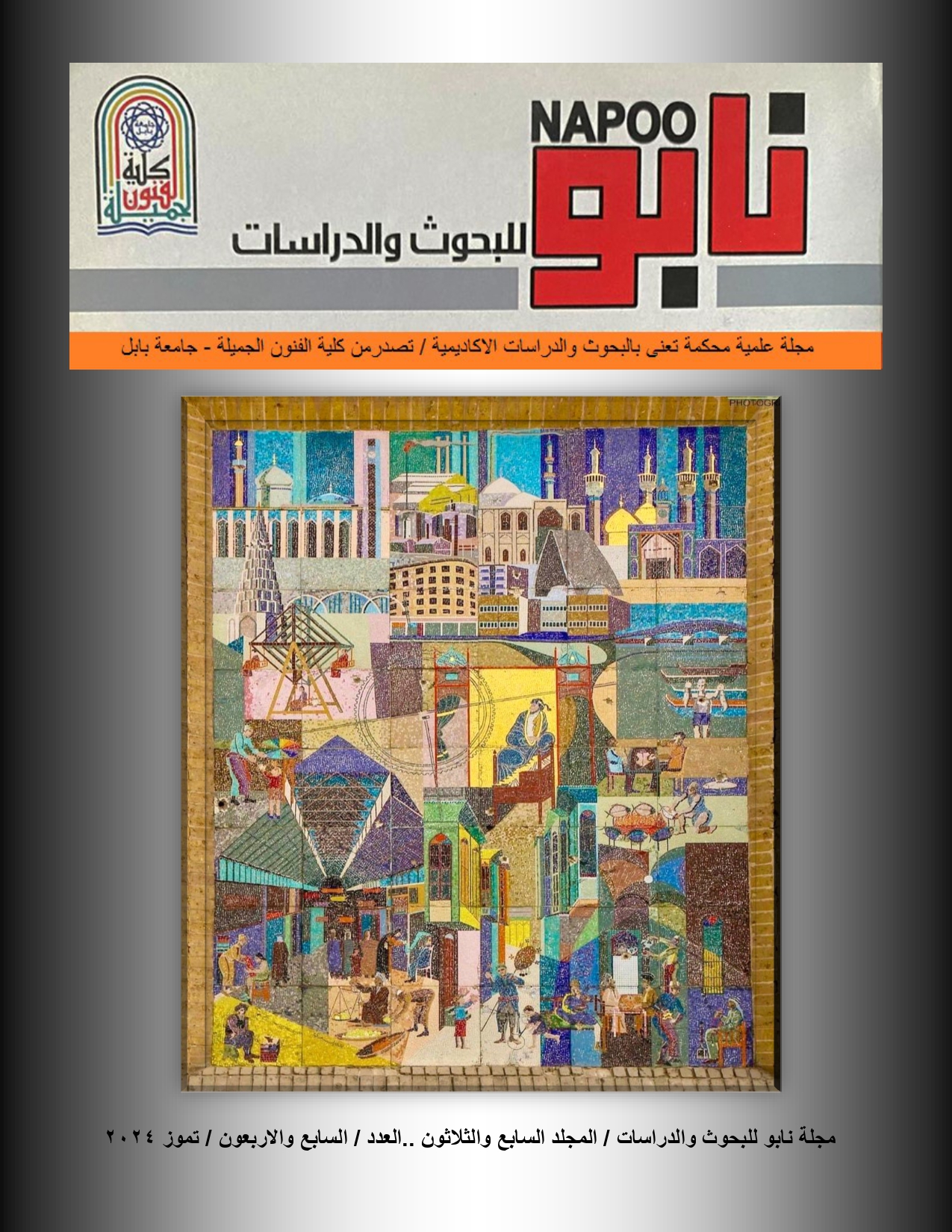Imaginary Imagineer in Contemporary Libyan Painting
Abstract
Abstract:
The title of the research is: Imagery in Contemporary Libyan Painting: An Analytical Study The research consisted of four chapters: The first chapter dealt with the research problem, an introduction to the Arab and African nature that characterises the city of Libya and its geographical location, so the research problem ended with the question of what is the pictorial imagination in contemporary Libyan painting with its influences and circumstances? The aim of the research was to identify the pictorial imagination in the art of contemporary Libyan painting, and the importance of the research lies in its contribution to the documentation and study of the pictorial imagination of the art of contemporary Libyan painting. As for the need for it, it can be attributed to the lack of academic studies that dealt with their art in painting with us (in Iraq), as it represents a cognitive, aesthetic and artistic addition to the library of the Faculty of Arts in general and students of the painting branch in particular for the richness of this colour of Arab-African art, and therefore the objective limits of our research were the pictorial imagination in their contemporary painting art, while the spatial and temporal limits were determined in the period before and after the fall of the country 2005 - 2021 and the change of regime throughout Libya, while the spatial and temporal limits were determined in the period before and after the fall of the country. 2021 and regime change in all of Libya, in addition to distinguishing the terms mentioned in the title of our research by definitions, in addition to defining them procedurally: The first was on the imagination and imagination preceded by the image in philosophy and other aspects, while the second was devoted to Libya with a simple talk about its history as an introduction to talk about its art and its artists, while the third chapter was devoted to research procedures and methodology, and intentionally selected (5) samples from (199) artworks collected by the researcher from various online sources and sent by the artists themselves, while the fourth chapter included results and conclusions: The results and conclusions reached from this research, including the most important findings of the research:
1- The techniques used in the paintings varied as well as the Libyan artists' experience of unconventional materials and techniques in the process of manifestation. Libyan artists invested a set of symbolic images and forms associated with the mythological thought in ancient Libya, employing them as a compositional basis in their pictorial imagination, which requires a high call and employment of imagination that has resulted in an imagination characterised by individuality and maturity as well as Libyan specificity in its historical, popular, political, social and political references
2- It came within the method of directing the imagination of (Shifa Salem) and (Elham Al-Farjani) to divide the work into two halves above and below, which refers us to historical pictorial references to the ancient Libyan archaeological mural arts and sheds light on symbolic folk arts and seeks to clarify and narrate the meaning of the artwork with the purpose of recording.
As for the main conclusions of the research:
1- Libyan art in painting showed an active manipulation of symbols and connotations and a high and bold use of imagination, with its artists having a rich amount of references and heritage depth that fuels their imagination in any imagined artistic act with unconventional drawing methods.
2- The art of Libyan figurative painting - regardless of what has been collected from their works similar in their motivation by the researcher - shows that it continues to represent the heritage with an orientation towards rooting their Libyan Arab-African identity characterised by durability, and despite the artist's recourse to more than one art school and experimenting with several painting techniques, he remained faithful to his subjects and was rarely influenced by previous Western influences.




